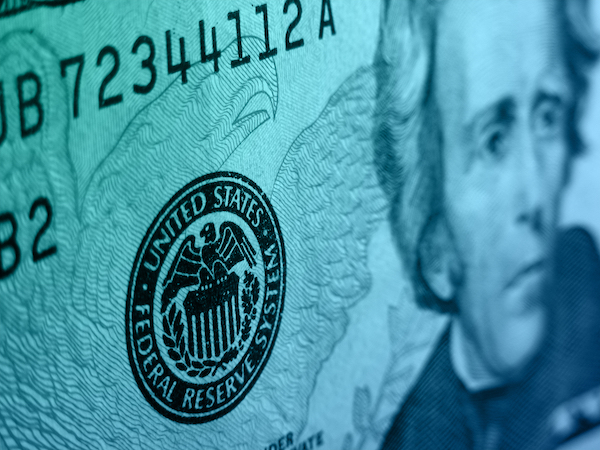Lastly, I would like to talk about the relations between internal and external equilibrium. As the
“impossible trinity” cited in many literatures shows, since China has been highly integrated with
the global economy, we have to take global factors into consideration when designing domestic
monetary policies and other policies. The exchange rate and interest rate provides an important
perspective. In this figure, the blue line illustrates the interest margin of China’s ten-year treasury
bonds, and the red line indicates the exchange rate of the US dollar against the Chinese Yuan.
Taking the ten-year treasury bonds as an example, a few years ago, the interest rate of ten-year
RMB treasury bonds was 4%, and that of ten-year USD treasury bonds was 2%, with a margin of
200 basis points, which was large. Now, the former has fallen to around 3.3%, and the latter has
risen to around 2.9%. Despite a positive margin, the RMB treasury bonds were only moderately
higher in rate than their USD counterparts, where the margin narrowed from 200 basis points to
40 basis points. This actually has significant meanings in that people are weighing the pros and
cons in holding USD-denominated assets or RMB-denominated ones. How can cross-border
capital flow keep balanced given the current situation? In fact, the interest margin reflects
expectations for the appreciation or depreciation in local currency. When cross-border capital
flow reaches balanced, there will also be a balance between the interest margin and the
depreciation or appreciation in the local currency.
If such a balance can be sustained, the interest
margin will remain at the current level. If not, the margin will continue to change, as reflected by
the movement in the exchange rate.
This graph describes the relationship between the exchange rate and the export. China is a large
country that depends increasingly on internal demands, and boasts a fairly complete set of
categories in manufacturing industries and a relatively sound industrial system. China’s
monetary policy should adhere to “self-centeredness”, so that it can effectively support the real
economy. Besides, we should also give consideration to international factors and strive for a
favorable external environment. When designing exchange rate policy, we should keep the
exchange rate flexible to make the balance more robust and resilient, and sustainable in times of
shock. Stability can be maintained when both internal and external equilibrium is considered.
Otherwise, the equilibrium will be more fragile under shock.
The flexibility of exchange rate comes from the mechanism where the exchange rate is decided
by market supply and demand. When the exchange rate becomes flexible, it is capable of
adjusting the macro economy and the balance of payments (BOP). This is why a flexible
exchange rate is an automatic stabilizer for the BOP. The ratio of China’s current account
surplus to GDP was around 10% in 2007, 1.3% in 2017, and possibly only 0.1% to 0.2% in this
year, which reflects the changes in China’s BOP. The best economic policy for us is to maintain
a general balance in BOP, rather than pursuing surplus. Admittedly, the BOP includes not only
the current account, but also the capital account. If the monetary policy and exchange rate
mechanism is sound enough to adjust the BOP automatically, then it will serve as a stabilizer;
11 / 15 BIS central bankers' speeches
otherwise, it will amplify shocks and render the economy more unstable. This is why both internal
and external equilibrium should be taken into consideration. The figure shows the flexibility of
RMB exchange rate which, as we can observe, is stable at an adaptive and equilibrium level.
Some may argue that RMB has depreciated since the beginning of this year. Judging from this
figure, we can see that RMB has remained stable this year to date. Throughout the year, the
British pound has depreciated by 5.6% against the US dollar, the euro has depreciated by 5.7%
against the US dollar, and the RMB has only depreciated by 5.8% against the same reference.
Compared with the currencies of other developing countries,
e.g. India, South Africa, Turkey and
Brazil, ours is also stable. The changes in exchange rate are mainly due to a robust dollar index,
with China-US trade frictions particularly impacting on RMB exchange rate. Even in such a
situation, the currency remained rather stable, with no major difference from the trends of the
British pound and the euro. As is widely known, the British pound and the euro are both important
convertible currencies, and we will pay attention to counter-cyclical adjustments to prevent the
sheep-flock effect. When necessary, we will adopt macro-prudential policies in dealing with
cross-border capital flow, with a view to stabilizing market expectations. In general, with
abundant experiences, tools and foreign exchange reserves, we are well prepared for, confident
in and capable of maintaining RMB exchange rate stable at an adaptive and equilibrium level.
That’s all for my speech today. Thank you!






0 Comments